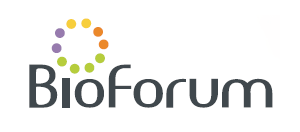21-22 JANUARY 2020, THE DAVID INTERCONTINENTAL HOTEL, TEL AVIV, ISRAEL
Self cleaning of hazardous organic materials by TiO2 nanoparticles derivatives
Avraham Dayan, The School of Molecular Cell Biology and Biotechnology, George S. Wise Faculty of Life Sciences, Tel Aviv University, Tel Aviv, Israel (avi_idf@hotmail.com)
Gideon Fleminger, The School Of Molecular Cell Biology And Biotechnology, George S. Wise Faculty Of Life Sciences, Tel Aviv University, Tel Aviv, Israel
The photocatalytic activity of titanium dioxide (TiO2) due to the generation of reactive oxygen species (ROS) under UV-excitation is often used for the decontamination of toxic hazardous materials and self-cleaning processes. However, the large band-gap of TiO2 limits the activity to the UV region. This limitation can be overcome by metal doping, which results in extending TiO2 activity into the visible range (VIS). This paper describes the preparation and characterization of several TiO2 forms and their modifications for enhanced photocatalytic activity at the UV-VIS range. In order to advance this concept for environmental decontamination, the degradation of the phosphorous-organic pesticide and chemical warfare agent, profenofos (PF), was tested. Fast and full degradation of PF was achieved using either TiO2 at the near UV (365 nm) or Ag-doped TiO2 (TiO2-Ag) at the UV and VIS ranges (400-550nm). The degradation products were identified chromatographically using GC/MS and HPLC, while the detoxification effect was determined electrochemically using an acetylcholinesterase biosensor. In view of our results we suggest that TiO2-Ag may be implemented as an additive in surface coatings to allow in situ green self-cleaning.
Organized & Produced by:

POB 4043, Ness Ziona 70400, Israel
Tel.: +972-8-9313070, Fax: +972-8-9313071
Site: www.bioforum.co.il,
E-mail: bioforum@bioforum.co.il